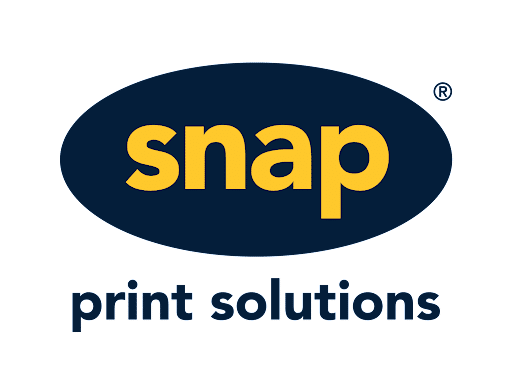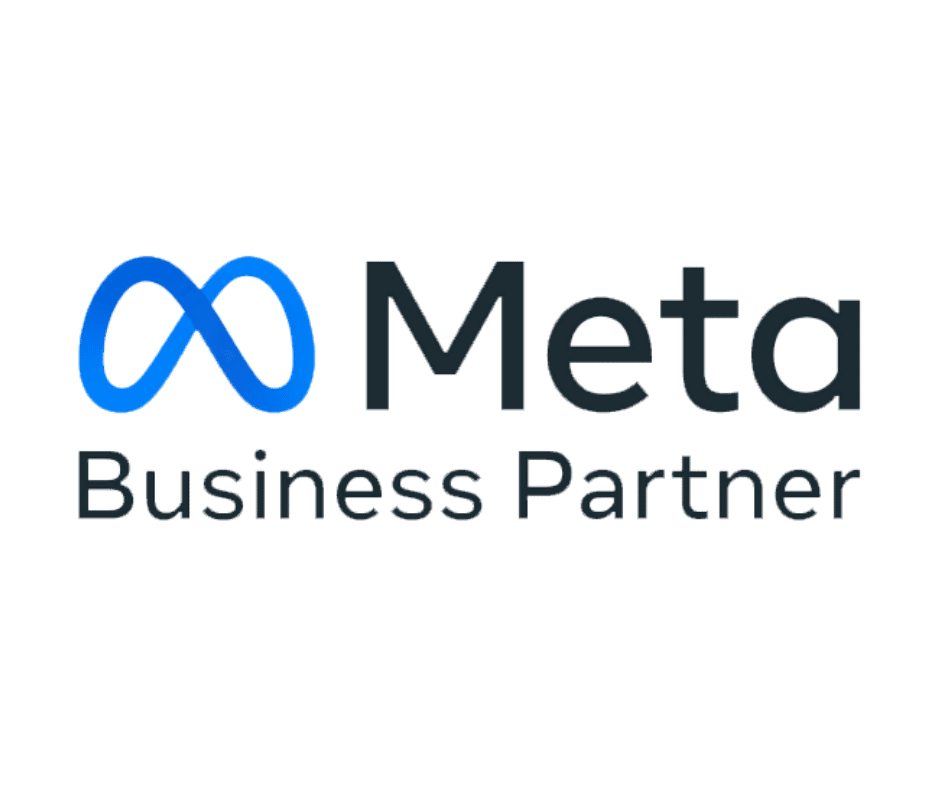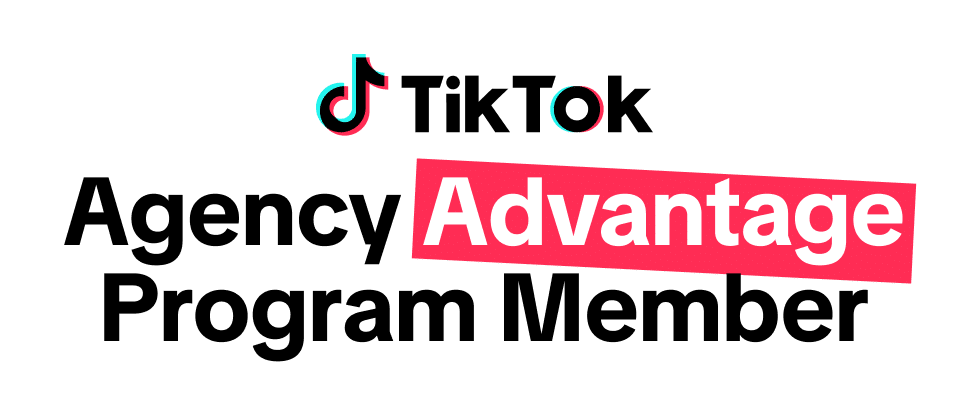The Australian Digital Marketing Strategy Guide 2025
Chapter 1: Australian Marketing Strategy and the Big Picture in 2025
What You Need to Know to Ensure Your
Marketing Plan Has Solid Foundations
1. Digital Marketing Strategy Foundations
The term ‘strategy’ is one of the most overused - and often misunderstood - words in the marketing world. As you’re aware, running ads on Google or publishing blog articles without a clear objective doesn’t involve strategy. It’s blind action without direction and doesn’t yield strong results. A tight digital strategy starts with a clear understanding of your objectives and the steps needed to get you there.
What does a good digital marketing strategy look like?
A good digital marketing strategy is your roadmap to achieving clear marketing objectives or business goals using defined marketing channels over a set period. It identifies your target audience, positioning and messaging while integrating channels like SEO, Google Ads, LinkedIn, Facebook, Instagram and email. Each of these will be explored in depth throughout this guide.
For Australian businesses, aligning digital marketing goals with overall business objectives - usually revenue growth - is critical. Whether you're a local FMCG company or an international B2B SaaS business, a well-crafted marketing strategy is essential to generate leads, sales and customers.
Strategy vs. tactics: What’s the difference?
It’s common to confuse strategy with tactics. Think of strategy as the what and why, while tactics are the how. For example, your strategy might be to increase organic website traffic, and optimising your website pages could be the SEO tactic that makes this actionable.
The 7 Ps of marketing
The 7 Ps - also known as the marketing mix - help businesses assess strengths, gaps and opportunities within their strategy to remain competitive.
These elements are:
- Product: Features, design, quality, and packaging of your offering
- Price: Pricing strategies and payment options
- Promotion: Marketing and public relations (PR) activities
- Place: Distribution channels and logistics
- People: Employee hiring, training and managementPackaging: Branding, design and labelling
- Process: Systems and technologies that streamline delivery
Understanding your 7 Ps lays the groundwork for building effective digital strategies that resonate with your audience.
How to create an effective digital marketing plan
There’s no universal formula for a ‘successful’ digital marketing plan. However, there are three key steps to ensure you’re creating a strategy that connects with your audience, makes the most of your resources and budget, and drives revenue.
Marketing thought-leader, Mark Ritson, explains how to do this through three essential phases:
- Diagnose the situation or problem
- Develop a clear strategy
- Plan the tactics to deliver on that strategy
Phase 1: Diagnose the situation
Start by reviewing your previous marketing efforts. Did you achieve your goals? What performed well? What challenges held you back? These insights are invaluable in setting your metrics for success.
Next, conduct research. If results have fallen short, a SWOT analysis (strengths, weaknesses, opportunities and threats) or in-depth market research can help you identify areas for improvement. Then, focus on market segmentation, pinpointing 3-5 audience segments most aligned with your product or service. Your strategy isn’t about what your company or what you offer - it’s about your audience.
Phase 2: Develop a clear marketing strategy
From your audience segments, define your target audience. Are you focusing on:
- Lapsed customers?
- Leads who haven’t converted?
- New customers unaware of your offering?
Take a closer look at your audience’s behaviour and preferences using tools like buyer persona grids to visualise their motivations, challenges and decision-making processes. This deeper understanding will help you set SMART goals (specific, measurable, achievable, realistic and timely) that become the foundation of your strategy.
Phase 3: Plan the marketing tactics
Your tactics will depend on your business type and goals. For example, an eCommerce business might focus on optimising pages for SEO and launching Google Shopping campaigns, while a B2B SaaS company may prioritise LinkedIn lead-gen ads or webinars.
Budget plays a crucial role - invest strategically in tactics that offer the best ROI, whether that’s refining Google Ads strategies, creating targeted content or implementing local SEO campaigns.
What are the top qualities of a digital marketer?
The top qualities of a digital marketer include problem solving, strong communication skills, the ability to think strategically and analytically and the capacity to collaborate in fast-paced environments.
How these qualities are applied depends on your role:
- Agency Marketers: Strong organisational and task management skills are essential for managing multiple clients effectively.
- Specialists: Analytical thinking and prompt decision-making are critical for optimising campaigns.
- In-House Marketers: Prioritising tasks, focusing on strategy and problem-solving are key to aligning marketing efforts with business goals.
Additionally, knowing when to outsource to an agency versus managing tasks in-house is a critical skill for in-house marketers.
2. Why Data-Driven Decisions Aren’t Always the Answer
The rise of digital marketing brought the belief that every activity could now be measured. Gone are the days of saying; "Half the money I spend on advertising is wasted; the trouble is, I don't know which half". This new era of measureability introduced an obsession with metrics like cost per click, cost per lead and cost per sale.
For some marketers, this has gone too far - they won’t invest in activities they can’t directly measure. Today’s buyer journey has evolved into a complex web of interactions and touchpoints, making precise attribution nearly impossible. Relying solely on hard data to make decisions is not only impractical but also risky. We’ve reached what can be called peak immeasurability.
The risks of over reliance on data
One of the most concerning trends we encounter is when marketers insist on making all decisions based on data alone. The harsh truth is that marketing data has limitations, and when used without context, it can mislead or even harm your campaigns.
This doesn’t mean you should ignore metrics altogether. Instead, 2025 demands a balanced approach where you’re data informed rather than data driven. Metrics should support your decision-making, not dictate it. Creativity, intuition and a nuanced understanding of your audience remain critical components of effective marketing.
Understanding marketing attribution
Attribution refers to how you credit different channels or touchpoints for their role in a buyer’s journey. In a simple world, attribution would be easy - if a customer visited your site through a Google Ads campaign and made a purchase, the full value of that sale could be credited to Google Ads.
However, real-life buyer journeys are far more complex. Customers interact with your brand multiple times across various channels - often using different devices - before converting. This complexity raises critical questions:
- Should the first touchpoint, like a Google search or social media ad, get full credit for conversion?
- Does the final touchpoint, like an email click or direct visit, deserve all the recognition?
- Or should every interaction along the way share equal credit?
These scenarios correspond to three common attribution models:
- First-click attribution: Assigns all credit to the first channel or touchpoint.
- Last-click attribution: Attributes all value to the final interaction before conversion.
- Linear attribution: Spreads credit equally across all touchpoints in the buyer journey.
Each model has its advantages and limitations. For example, first-click attribution can undervalue nurturing activities, while last-click attribution often overlooks awareness building efforts. Linear attribution attempts to balance these extremes but may oversimplify the nuances of each channel's role.
Making attribution work for your strategy
To avoid skewed insights, consider these questions:
- How complex is your typical buyer journey?
- Are early touchpoints, like awareness campaigns, undervalued in your current model?
- How might this bias influence your budget allocation and future channel selection?
For many businesses, default attribution settings - like last-click attribution in platforms like Google Analytics - fail to account for the full buyer journey. While no model is perfect, being aware of these limitations helps you make more informed decisions about marketing performance and channel investment.
The dawn of Google Analytics 4
While there are countless interactions with brands that remain impossible to measure - like word-of-mouth recommendations and online reviews - we often assume the data we do see is flawless. However, even the most robust analytics tools have their limitations.
In mid-2023, Google retired Universal Analytics (UA) to introduce Google Analytics 4 (GA4), a platform designed for the next generation of data tracking. Combining AI and machine learning with advanced cross-device tracking, GA4 offers a more holistic view of a user’s digital journey.
While GA4 brings exciting advancements, the transition hasn’t been without challenges for marketers. Businesses that delayed the move to GA4 struggled to compare year-on-year data, creating gaps in reporting. Furthermore, key metrics like users, page views, bounce rates and sessions are now measured differently, adding complexity to historical comparisons.
Despite its improvements, GA4 isn’t perfect. At its core, Google Analytics provides an informed estimate of user activity - but it isn’t infallible. For example, in June 2024, Google updated its attribution models to address an issue where organic search was incorrectly credited with conversions that were, in reality, driven by paid search campaigns during single-page sessions. These adjustments highlight the evolving nature of analytics and the need to interpret data critically.
As marketers, it’s our responsibility to educate senior stakeholders and C-suite executives on the nuances of analytics tools like Google Analytics. Dashboards and reports, while invaluable, never tell the full story.
Dark social: The hidden impact of organic social media
The concept of ‘dark social’ is both eye-opening and essential for marketers to understand. Dark social refers to legitimate visits to your website from social or messaging platforms - like TikTok, Slack, WhatsApp, LinkedIn, and YouTube - that are misclassified as ‘direct traffic’ in tools like Google Analytics, instead of being attributed to ‘organic social’ or ‘referral’.
This misclassification means that your efforts on organic social media may be significantly undervalued from an analytics perspective.
Consider the graph below; A 2023 study done by Sparktoro tested 1000+ website visits across 11 major social platforms and found that a significant percentage of traffic was reported as ‘direct’ rather than being attributed to the correct source. This raises important questions for marketers relying on analytics to assess the performance of organic social campaigns.
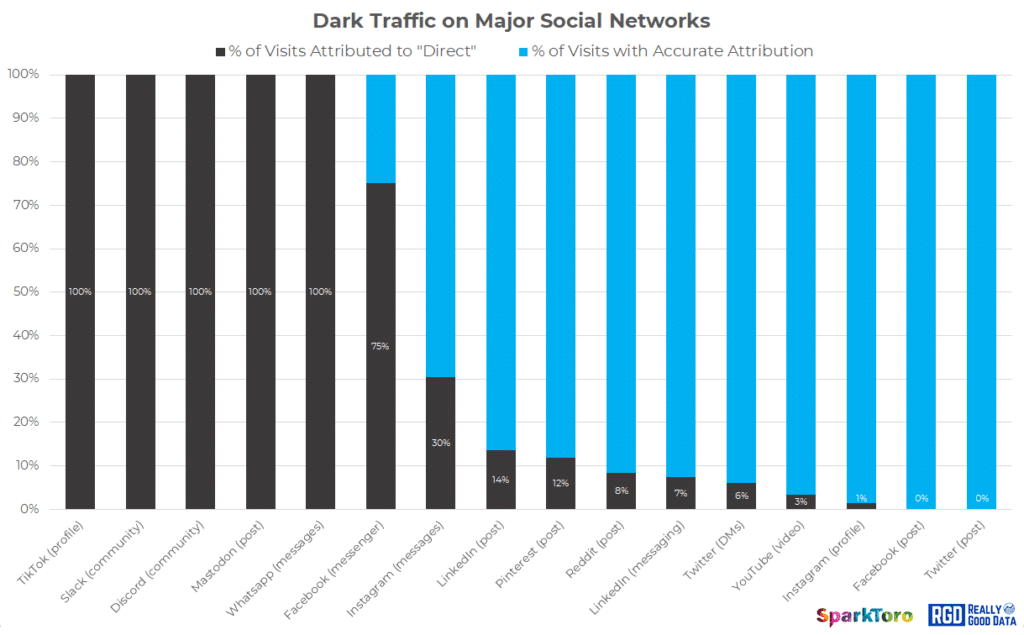
One theory is that this misclassification can lead marketers to overstate the impact of paid social campaigns, potentially shifting budgets away from organic strategies that are, in reality, performing well. This ties back to the complexities of attribution in today’s multi-touchpoint buyer journeys.
Marketers must look beyond traditional dashboards to fully understand how brand presence, referrals and word of mouth influence customer decisions. These hidden touchpoints play a critical role in shaping the buyer journey, even if they don’t show up neatly in analytics reports.
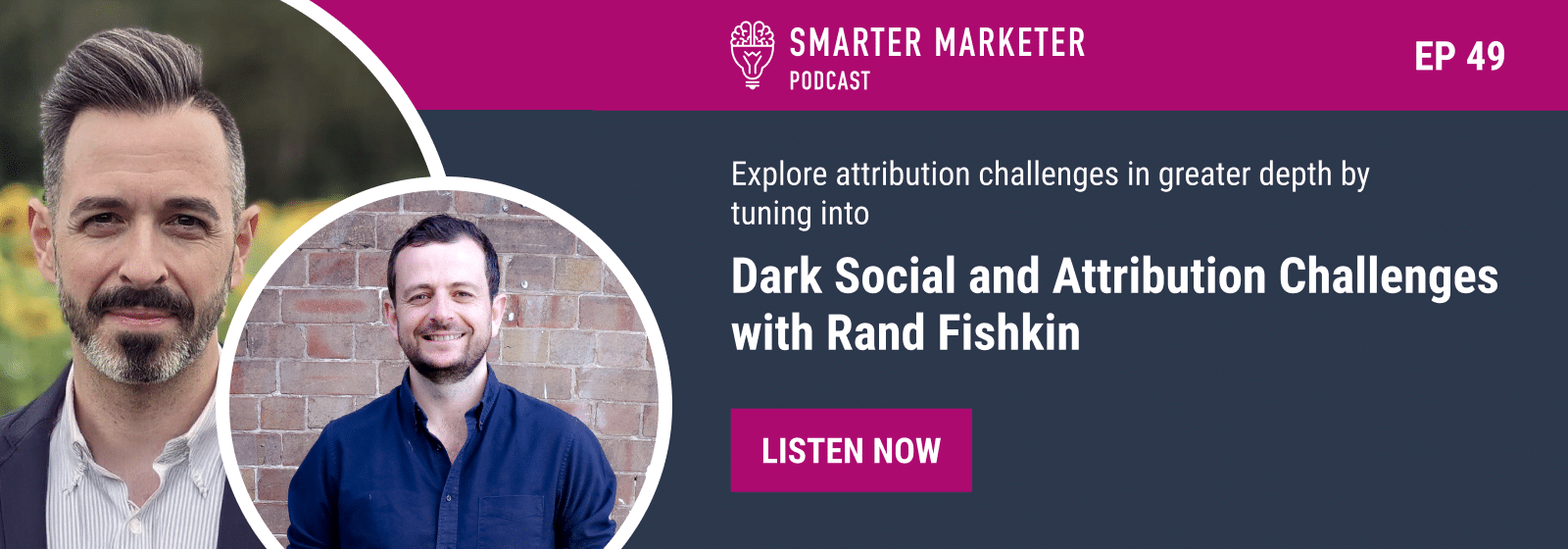
The response of Big Tech companies to data privacy concerns
The global focus on data privacy continues to grow. In Australia, new and updated privacy laws aim to better protect consumers from data breaches and misuse. With individuals becoming more conscious of how their data is collected and used, the Big Tech companies are implementing greater measures to protect user privacy. While this shift benefits consumers, it also creates challenges for marketers trying to connect with audiences and accurately measure campaign performance.
Take Apple - since the introduction of App Tracking Transparency (ATT) in iOS 14, Apple has steadily expanded its privacy features in subsequent updates. Features like Mail Privacy Protection now block tracking of email opens, IP addresses and geolocation. More recently, updates in iOS 17 and beyond have further cemented Apple’s privacy-first approach, including enhanced controls for sharing data with apps and new tools like Visual Look Up, which anonymises image data for user searches. These advancements continue to limit the behavioural data available to marketers while emphasising transparency and user control.
Google is also advancing its privacy-first approach. In January 2024, the company began phasing out third-party cookies for 1% of Chrome users, although they reversed this decision in July 2024, opting instead to provide users with the choice to enable or disable them. Nevertheless, there has been an increasing shift in how marketers track user behaviour across websites. With third-party cookies at the threat of becoming obsolete, precise audience targeting and personalised messaging will face considerable constraints.
So, what does this mean for marketers? It’s clear that access to consumer data will continue to diminish. As these changes unfold, marketers will need to adapt by embracing first-party data strategies, building stronger customer relationships and innovating their approach to audience engagement. While the path forward might be more complex, it also offers an opportunity to rethink how we deliver value in a privacy-first world.
Importance of collecting first-party data
When it comes to data, there are three key types:
- First-party data: Information you collect directly from your customers or users through your own channels or touchpoints.
- Second-party data: Data you obtain from another company or organisation.
- Third-party data: Data collected by external entities not directly tied to your business.
With privacy regulations tightening and the decline of third-party data, collecting first-party data has never been more crucial for your marketing.
Investing in a solid CRM is one of the smartest moves you can make. A clean, well-maintained database not only helps future-proof your business but also provides a solid foundation for your marketing efforts. With a legitimate, up-to-date contact list, you can run effective email marketing campaigns and feed your first-party data into ad platforms like Google, Facebook and LinkedIn to target warm audiences. This keeps your brand in front of potential buyers, even if some contacts unsubscribe from emails.
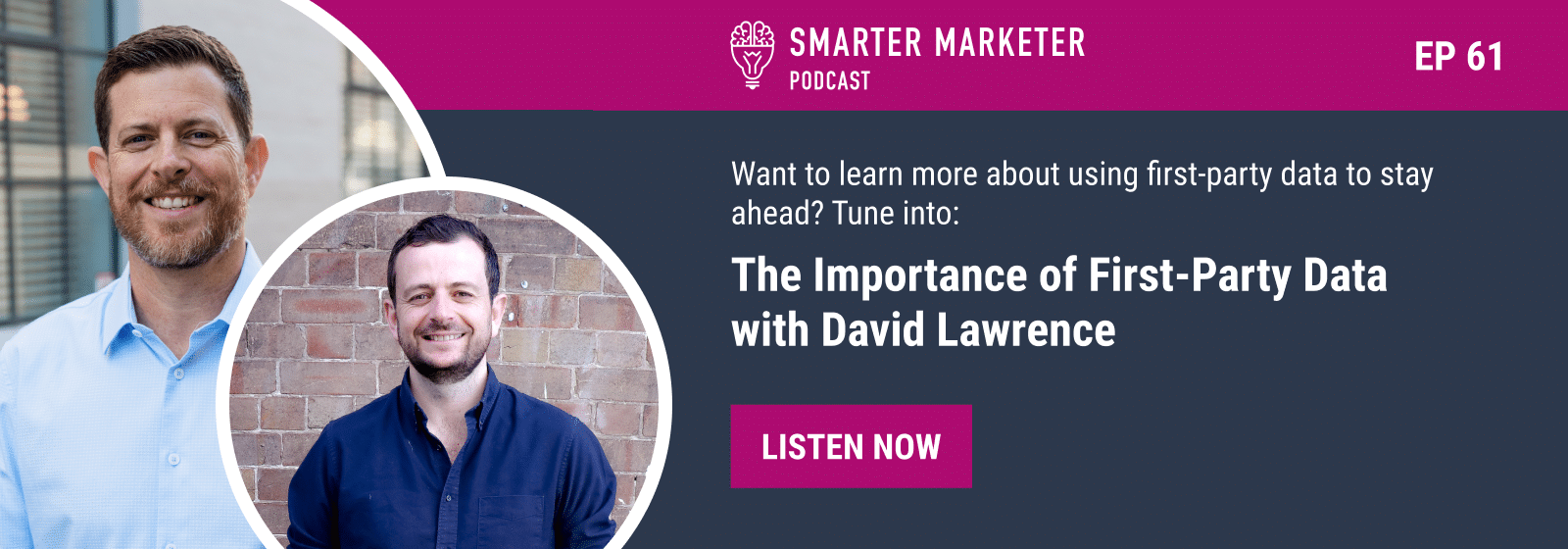
No one channel to rule them all
If you’re expecting a single ad or channel to instantly deliver a flood of quality leads or sales, it’s time to rethink your approach.
There's no shortcut or magic formula for transforming your digital strategy overnight. Success comes from using the right mix of channels that align with how your prospects move through their buyer journey. For most businesses, that means combining organic search, paid search, social, email marketing and display.
Channels alone won’t guarantee success. Factors like your brand’s reputation, online reviews, public relations efforts, competitive pricing and customer sentiment all influence the effectiveness of your campaigns.
In 2025, an effective strategy is about balance. It’s not just about being present on every channel; it’s about delivering value and staying relevant wherever your audience is paying attention.
3. Businesses That Invest in Brand Make More Money
Chasing quick wins often leads businesses to focus heavily on performance-based activities aimed at bottom-of-funnel audiences. While these tactics can deliver short-term results, they miss a critical piece of the puzzle: building a strong brand.
Brand-building activities play a vital role in introducing people to your business and nurturing them through the early and middle stages of their buyer journey. Aligning your marketing strategy with how real-world buyers behave - building awareness before pushing conversion - leads to more sustainable growth.
The general rule of thumb is to allocate 60% of your marketing budget to brand-building and 40% to performance or activation activities. While this split may vary depending on your industry and customer lifecycle, the principle remains: neglecting your brand is a costly mistake.
Investing in your brand isn’t just about visibility - it’s about future-proofing your business and creating a foundation for long-term success.
Long-term vs short-term marketing
Binet and Field’s influential study, The Long and the Short of It, underscores the importance of balancing brand-building activities with performance marketing. Their research highlights two distinct types of marketing - long-term and short-term - and how both are essential for sustainable success.
Long-term marketing focuses on building strong, lasting connections between your brand and potential buyers for future purchases. This is often referred to as brand marketing or “the long of it”. Examples include a SaaS finance leader speaking at a conference for CFOs, Commonwealth Bank sponsoring grassroots sports, hosting industry webinars for your target audience or winning prestigious industry awards. These activities create trust and recognition, positioning your brand as a market leader over time.
Short-term marketing, by contrast, aims to drive immediate action and is commonly known as performance marketing, demand generation, or ‘the short of it’. Its goal is quick conversions with calls-to-action like ‘visit our website’, ‘book a test drive’, or ‘download our demo’. These tactics deliver fast results, but they don’t build the deeper connections required for long-term growth.
The challenge with short-term focus alone is its temporary impact. Sales may spike when campaigns run but drop just as quickly when budgets tighten or activity stops. Long-term strategies, however, drive consistent, sustainable growth. They ensure your brand is recognised, trusted and resilient against economic or environmental shifts. A well-executed balance between both approaches strengthens your business - providing both immediate wins and a solid foundation for the future.
Short-term impact on profit

Long-term impact on profit

Combined activities' effect of short-term and long-term marketing on profit:

The 95/5 rule
The 60/40 split between brand-building and performance activities makes sense when you consider a key truth: 95% of your target audience isn't ready to buy right now.
That leaves only 5% of the market actively looking for your product or service - and that small segment is shared among all of your competitors. If you wait until your audience is in-market, and they’ve never heard of you, the odds of converting them are slim - especially for high-consideration purchases.
This is why long-term brand-building is so crucial. BMW doesn’t just market to people who can afford their cars today - they invest in creating brand recognition with 20-year-olds who might buy a BMW in five or ten years. Similarly, XERO pours resources into content marketing to establish trust and authority with future business owners.
If your budget is focused solely on that 5% of in-market buyers, you're stuck chasing immediate wins at the expense of future growth. Worse still, you risk falling behind competitors who are playing the long game. By investing in the 95%, you create awareness, build credibility and ensure that when people are ready to buy, your brand is top of mind.
Good content marketing = Great leads and sales
To make 2025 your strongest year yet, you need a strategy that nurtures the 95% of the market who aren’t ready to buy right now.
Most of these people don’t know your business exists, let alone how your solutions could add value to their lives or businesses. They won’t respond to search ads, and they’re unlikely to engage with your paid social or display ads.
The best way to connect with these top and middle-of-funnel audiences is implementing a well-thought out content marketing strategy that provides genuine value.
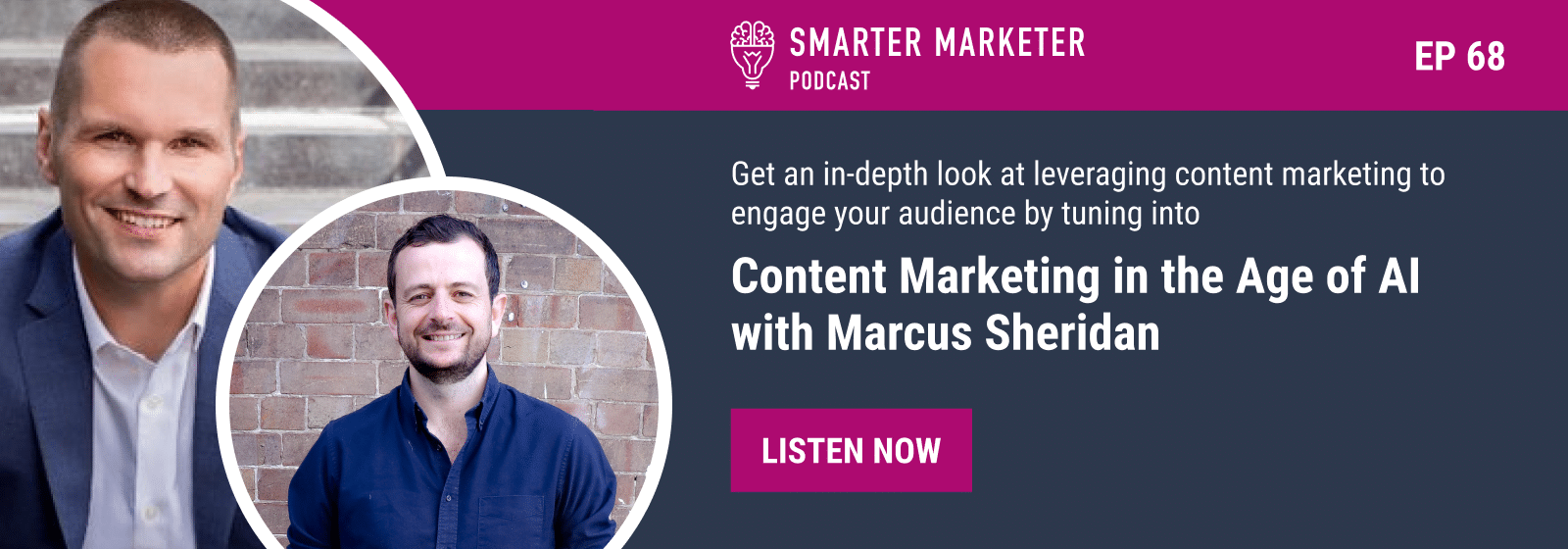
What is content marketing?
Content marketing is about creating and sharing valuable, relevant and consistent content to attract and retain your audience. Whether it’s videos, blogs, eBooks, webinars, podcasts or emails the goal is to become a trusted authority in your industry. When your audience is ready to buy, they’ll think of you first.
Key points for a strong content strategy:
- Understand your audience: Know your target personas and their pain points. The more specific your insights, the better your content will resonate. Solve real problems. Create content that addresses timely, relevant issues your audience faces.
- Build your database: Use gated content like downloadable ebooks or webinar sign-ups to collect email addresses and grow your CRM. Diversify your formats. Not everyone learns the same way. Offer a mix of blogs, webinars, podcasts, video and more so people can engage in ways that work for them.
- Repurpose and reuse: Maximise the lifespan of your content. For example: Turn an ebook into a blog series or share key blog points in an email campaign. You can also edit video snippets into bite-sized content for social media.
From average to exceptional content
The internet is flooded with generic, surface-level content. Audiences are drawn to businesses that go deeper—sharing useful, insightful information that genuinely addresses their needs. By investing in quality over quantity, you can set yourself apart as a reliable and trusted source.
The Hollywood vs Newspaper approach
A smart way to ensure quality and save time is by reusing high-performing content. Take your most successful pieces, update them for today and re-publish them as evergreen content. This is known as the Hollywood approach - timeless blockbusters - versus the fleeting relevance of a newspaper.
By prioritising thoughtful, audience-driven content marketing, you’ll not only build trust but also stay top of mind for when your audience is ready to act.
Marrying brand with actionable digital marketing
You don’t need to overhaul your entire brand to make meaningful changes to your digital marketing strategy. In fact, there’s plenty of scope to incorporate low-budget, high-return brand-based campaigns that can run ’always-on’.
Examples include value-driven display retargeting campaigns via the Google Display Network targeting past website visitors or brand-focused Google Ads campaigns.
One long-standing debate is whether paying for brand search ads is worthwhile. At Rocket, we consistently see strong results from brand campaigns and here’s why they work:
- Message control: Ads allow you to craft a tailored message, unlike the static and often generic organic listings.
- Targeted landing pages: You can direct searchers to specific landing pages that align with their intent.
- Competitor advantage: Ads ensure you stay at the top of the search engine results page (SERP) even when competitors are bidding on your brand.
- Enhanced visibility: Paid ads work alongside organic results to give your business more presence on the SERP (especially on mobile).
Both anecdotal evidence and our own tests reveal that turning off branded search ads doesn’t result in sufficient organic uplift to cover the revenue lost. In most cases, the combined savings and organic gains don’t match the value delivered by brand campaigns.
A fresh approach to your 2025 marketing budget
When reviewing your 2025 budget, take a close look at how you’re allocating funds across brand campaigns and bottom-of-the-funnel activities. Brand campaigns are typically more cost-effective and deliver a higher ROI. However, lower-funnel campaigns play a crucial role in bringing in new prospects into your ecosystem - many of whom will eventually search for your brand.
For the best results, run both types of campaigns simultaneously. Brand-focused ads will build recognition and trust, while performance-driven campaigns will introduce your offering to new audiences. Together, they create a balanced strategy for sustainable growth.
4. Embrace AI and Automation
The rapid evolution of generative AI tools like ChatGPT, Google’s Gemini Bard and Adobe’s Firefly has created both excitement and apprehension within the industry. Many are asking: Will AI replace my role? Is using AI dishonest? Should I charge less if I leverage AI for my work?
The reality is AI excels at tackling repetitive, time-consuming tasks and identifying patterns to deliver efficient solutions. However, AI is not a replacement for skilled digital marketers. It complements their expertise, particularly in ad management, where human oversight remains crucial for success.
The most immediate impact of AI lies in its integration into tools we already use, such as Google Suite, Google Ads, HubSpot, Salesforce and Microsoft. While it’s essential to stay informed about these advancements, chasing every new feature isn’t always productive. As Rand Fishkin said; ‘What is happening in the marketing world is generally less important than what’s happening in your world’. Focus on what directly affects your business over the next year.
AI as a research tool, not as a replacement
Generative tools like ChatGPT have revolutionised content creation with their ability to generate conversational and informative copy. However, the key to success lies in using AI as a guide rather than accepting its output as a finished product.
AI can lay the foundation for copywriting tasks, such as blog posts, landing pages, FAQs, social media captions and meta descriptions. While its knowledge is extensive, it lacks the ability to fully capture brand nuances or niche topics, and is extensive enough to offer fantastic copywriting support.
Use it to boost productivity and effectiveness, but always add your unique expertise to make your content stand out.
Remember, success in marketing comes from differentiation - and this can’t be achieved by relying solely on AI-generated work. It’s a tool, not a substitute.
AI-Driven design - sparking creativity
AI-driven design tools such as Midjourney, Jasper and even Canva are opening up new opportunities for designers and businesses alike, to spark creativity and complete design tasks quicker and more efficiently. Design automation can reduce time on tedious and often repetitive tasks by automating image classification, colour palette selection and layout generation, meaning that designers can spend more time on the creative/strategic aspects of their work rather than the technical details.
Design algorithms are also a fantastic tool to spark inspiration by providing a template/sample of creative concepts. There are multiple tools/software platforms online that can generate logos, website layouts, social posts, slide decks or other creative designs. This is a convenient and often time-efficient solution for completing basic designs where you don’t want to put too much energy/focus, or you are trying to minimise a lengthy concept creation process.
Smart ways to use AI in marketing
Still on the fence about AI? The best way to guage its potential is to experiment. Set aside time to explore different tools, test responses and see how they fit into your workflow.
Plenty of resources exist on writing effective prompts, but here are some great AI use cases to get started:
- Managing budget pacing
- Creating organic social calendars
- Finding design inspiration
- Refining ad copy
- conducting top-level competitor research
- Generating content ideas for blogs, podcasts or webinars. Editing for tone, continuity and accuracyWriting schema mark-up scripts
- Keyword analysis and ideation
Don’t leave everything to automation
In 2025, the push for automation in marketing will only grow, with platforms like Google and Meta expanding their offerings. Marketers, however, must still know when human intuition trumps automation. While automation streamlines tasks, it can’t replicate the subtle nuances of audience connection.
Tailored audience segmentation is essential, and businesses that neglect it may fall behind. Marketing automation is crucial, but only when used strategically to complement human insights. Without it, your brand risks being left in the dust.
TASK:
Review all tasks you complete within a week, and consider which low-effort or time-consuming activities could benefit from AI assistance. Once you have found a rhythm and a brief that works for you, turn this into a template that you can edit and tweak for future tasks.
Chapter 2: Everything You Need to Know About the Best Performing Digital Marketing Channels of 2025
What’s Working in Google Ads, SEO, Paid Social,
Email Marketing, Video and AI Right Now
1. The Most Important Google Ads Updates
As AI and automation continue to reshape digital advertising, Google Ads is rolling out major updates that will redefine how marketers reach and engage audiences. With increasing pressure to balance performance, creativity and privacy compliance, staying ahead of these changes is critical. From AI-powered campaign formats to stricter data regulations, these updates will influence everything - be it audience targeting or ad creative.
Here’s what you need to know about the key shifts in 2025 and how to adapt for success.
The introduction of Demand Gen campaigns
Demand Gen campaigns, introduced by Google Ads in 2024, are designed to enhance visual storytelling and drive demand across Google's most engaging platforms. Key features you should know about include:
- Greater visual engagement: You can use Demand Gen campaigns to deliver visually compelling ads across platforms like YouTube, YouTube Shorts, Discover and Gmail, reaching up to 3 billion active monthly users. With these campaigns, it’s important to use visually compelling and mobile-friendly content so that you can capitalise on the potential of visually intensive platforms like YouTube Shorts and Discover.
- AI-powered creative tools: Leveraging Google's AI, Demand Gen campaigns offer generative image tools that can help you create high-quality image assets efficiently. Using AI to generate creatives and optimise targeting reduces manual effort and costs, while ensuring your ads remain relevant.
- Audience targeting with lookalike segments: Demand Gen campaigns are great for creating highly tailored ad experiences. By using lookalike segments, you can reach new, qualified audiences similar to your existing customers - expanding your reach and potential customer base. Demand Gen campaigns help improve conversion rates, but it’s important to manage first-party data better, along with strategic audience segmentation.
- Integration with product feeds: Demand Gen campaigns also support the inclusion of product feeds, and you can showcase relevant products to the right audience at optimal moments. The integration is based on personalisation and helps your campaign strikes the right chord with the right audience.
Note that starting in March 2025, Google will discontinue the creation of new Video Action Campaigns. Existing campaigns will be automatically upgraded to Demand Gen campaigns in Q2 2025.
You can now update Dynamic Search Ads and Google Display Ads to Performance Max
From July 2024, Google Ads allows advertisers to upgrade Dynamic Search Ads (DSAs) to Performance Max (PMax). PMax is particularly useful if you want to create multi-channel campaigns across search, display, YouTube, Gmail and Maps while retaining settings and learnings from DSAs.
Benefits of upgrading to PMax
- Integrated campaigns: Combines efforts across multiple platforms for better ROI using AI.
- Improved conversions: Google claims a 15%+ increase in conversions (results vary).
- Inventory-aware ads: Automatically excludes out-of-stock products for eCommerce.
- Greater text control: Offers flexibility in editing ad headlines.
- Broader reach: Engages audiences across more Google platforms.
Drawbacks of upgrading to PMax
- Limited reporting: Lacks granular insights; reporting transparency is still evolving.
- Reduced keyword control: No negative keywords or audience targeting.
- Loss of copy control: Relies on AI instead of website-specific messaging.
- Potential imbalance: AI may prioritise certain audiences or products unevenly.
- Uncertain future for DSAs: DSAs may be discontinued, disrupting existing campaigns.
Upgrading to PMax will offer you advanced tools but comes with trade-offs in control and transparency. The choice depends on your campaign needs and goals.
Enhanced privacy measures with Consent Mode V2
Google's Consent Mode V2 enhances user privacy and compliance with data protection regulations by adjusting how Google tags behave. The adjustments are based on user consent choices. These are the key features you should know about:
- New consent parameters: In addition to the existing ad_storage and analytics_storage parameters, Consent Mode V2 introduces ad_user_data and ad_personalisation. These parameters provide more granular control over advertising data and personalised ads, making sure that user preferences are respected.
- Compliance with privacy regulations: Consent Mode V2 aligns with stricter privacy norms, particularly within the European Economic Area (EEA), to help ensure that data is handled in accordance with user choices and legal requirements. The deadline for compliance was March 2024, and if you haven’t yet, it’s important to take immediate action and update your tagging infrastructure and consent management processes. Non-compliance may lead to loss of access to key measurement features in Google Ads.
As privacy measures evolve, you will need to innovate privacy-compliant ways to target audiences and measure campaign performance. This strengthens the necessity for first-party data and advanced modelling techniques.
In 2025, Google Ads is shifting gears—AI and automation are taking over the manual work, which means strategy, creativity, and first-party data will matter more than ever. With advanced measurement tools like GA4 and data-driven attribution reshaping how we track performance, getting a handle on multi-touchpoint analysis and privacy-first insights will be key. The real challenge? Striking the right balance between human creativity and Google’s AI-driven advancements.
ACTIVITY:
Take a moment to evaluate your current campaigns or tools:
- Are your ad creatives optimised for visual engagement on YouTube Shorts or Discover?
- How ready is your team for AI-driven Performance Max upgrades?
- Have you implemented Consent Mode V2 to ensure privacy compliance?
These are essential questions you need to find answers to in order to make the most of PPC in 2025.
2. Using Social Media Ads to Your Advantage
Social media advertising is evolving fast, with AI-powered automation, improved audience targeting and new interactive formats shaping the way brands connect with consumers. These changes are making campaigns easier to manage but also increasing competition. Marketers who adapt will benefit from more efficient tools, but success will depend on strong creative, smart strategy and a clear understanding of platform updates across Meta, TikTok, LinkedIn and Pinterest.
What Meta has been up to
Meta's Advantage+ suite has significantly changed digital advertising on the platform by integrating AI to automate and optimise different aspects of campaign management. Here's an in-depth look at its key features and the impact on advertisers:
- AI-powered campaign automation: Advantage+ automates the entire campaign process, from creative development to audience targeting and budget optimisation. By analysing vast amounts of data, it identifies optimal strategies to achieve advertisers' objectives, such as increasing brand awareness or driving sales.
- Enhanced creative optimisation: The platform dynamically generates multiple ad variations, tailoring them to individual user preferences. This personalisation increases engagement and conversion rates by delivering content that resonates with each user.
- Improved Return on Ad Spend (ROAS): Advertisers utilising Advantage+ have reported significant improvements in ROAS. For instance, Meta's studies indicate that AI tools like Advantage+ Shopping Campaigns have led to a 12% improvement in ROAS over two years.
- Streamlined ad management: By automating complex tasks, Advantage+ reduces the manual effort required in campaign management. This allows marketers to focus on strategic planning and creative development, enhancing overall efficiency.
Combine strategy and analytics for success
In 2025, you’re bound to rely on AI-powered tools like Meta’s Advantage+ for hyper-personalisation and improved ROI, all while automating tedious setup processes. This will democratise advertising, allowing marketing teams with comparatively modest budgets to compete with larger brands.
However, this will also intensify competition for ad inventory. Marketers will have to shift their focus towards creative oversight, strategic planning and advanced analytics, which will most likely increase their dependence on AI tools to improve efficiency. The caveat? There’s a big risk you could lose your brand’s touch and end up with generalised messaging and content. With rising competition, this is the last thing you need.

TikTok’s new targeting solutions
TikTok has introduced several innovative advertising solutions to enhance campaign performance and user engagement:
Symphony AI
In November 2024, TikTok globally launched its generative AI video creation platform, Symphony Creative Studio, to all advertisers. This platform is a key component of TikTok's Symphony suite, introduced earlier last year and designed to assist businesses, creators and agencies with producing high-quality, engaging content tailored to their brands.
Key features you should know of are:
- AI-powered video generation: Users can input product details, assets, or URLs and the tool generates TikTok-ready videos in minutes, complete with unique layouts and scripts inspired by top-performing content on the platform.
- Digital avatars: The platform offers both stock avatars - pre-built avatars featuring licensed actors from diverse backgrounds speaking over 30 languages and custom avatars tailored to represent a brand's specific spokesperson or creator.
- Translation and dubbing: Symphony Creative Studio enables seamless translation and dubbing of videos into multiple languages, which helps broaden content reach and impact while connecting with diverse audiences worldwide.
- Integration with Getty Images: TikTok has partnered with Getty Images, allowing advertisers to access a vast library of licensed images and videos to enhance their AI-generated ads and avatars, ensuring the creation of powerful, engaging TikTok-first content with ease.
Smart Performance+ Campaigns
TikTok’s Smart Performance+ Campaigns are an advanced automation solution that uses AI and machine learning to streamline ad management and optimise performance with minimal manual effort. You can simply set your goals, budget and creative elements, while TikTok's system automatically handles audience targeting, bidding and creative optimisation to drive the best possible outcomes.
These campaigns are great for efficiency as they use real-time data and predictive modelling to refine ad delivery, making sure that campaigns are both cost-effective and impactful.
Search Ads Beta
Search Ads Beta allows advertisers to display their products in response to user search queries within the app. This feature helps reach users actively seeking specific content or products.
By tapping into user intent, you can connect with potential customers at critical moments in their decision-making process, potentially increasing conversion rates.
Interactive ad formats
The new interactive ad formats include gamified ads and dynamic showcase ads and aim to boost user engagement and personalisation. These formats have been great for creating immersive experiences that can lead to higher engagement and brand recall. It’s a great way for you to foster deeper connections with your audience.
Stand out with high quality, strategic creative
While these new tools do provide actionable insights, it's important to prioritise creative, high-quality content and adapt to evolving success metrics to stand out on TikTok. The adoption of short-form content is rising rapidly and businesses are increasingly jumping on the bandwagon. Many new companies now start with TikTok or Instagram for marketing, and then move to leverage other channels. Staying ahead requires the right strategic creative - but only if TikTok is the right place for your business to be.
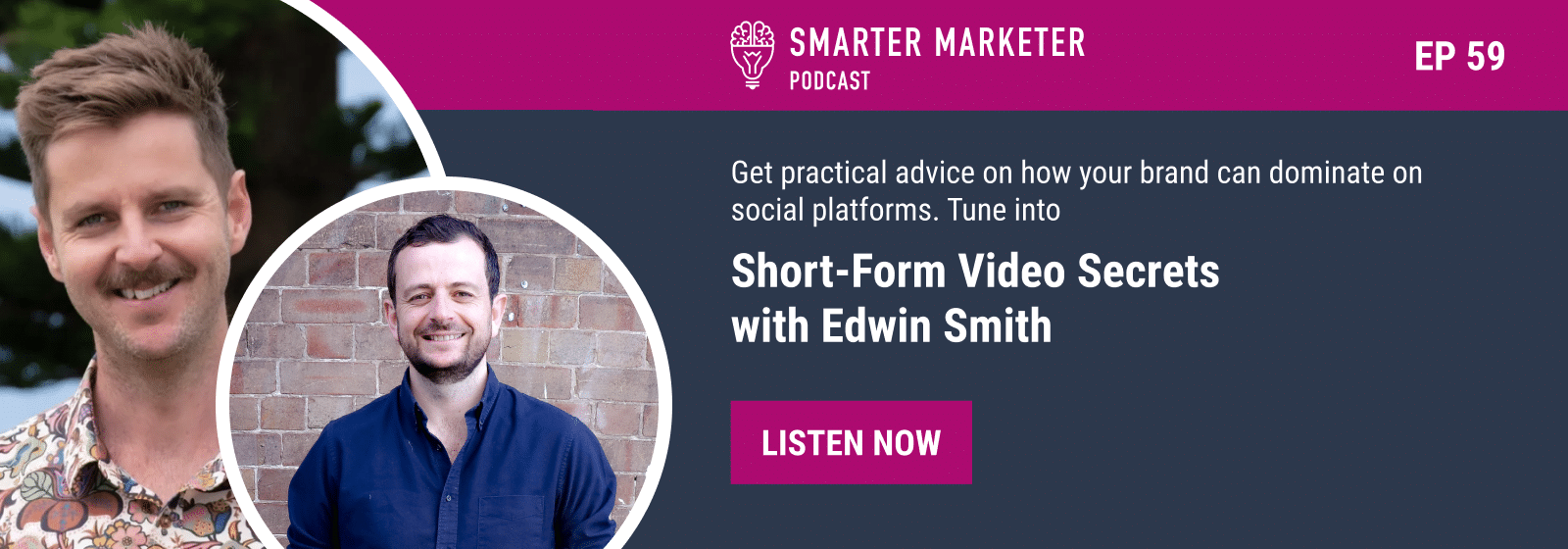
LinkedIn Ads updates
LinkedIn has introduced several new features to its advertising platform as well, offering digital marketers new opportunities to engage professional audiences:
Expanded Conversation Ads
LinkedIn's Conversation Ads have been updated with new templates designed for lead generation and event promotion. These interactive, message-based ads can help you engage prospects in personalised dialogues, guiding them through customised pathways based on their responses. This approach is effective for increasing engagement and conversion rates by delivering tailored content that resonates with individual user needs - another great way to personalise your offering.
Enhanced video advertising
Recognising the growing importance of visual storytelling in B2B marketing, LinkedIn has launched video ad formats. The platform's new ‘Wire’ program lets you promote in-stream video ads alongside content from reputable publishers like Barron's, Bloomberg and The Wall Street Journal.
More integrated audience insights
The platform has bolstered its analytics capabilities, providing deeper insights into follower activity and demographics. These enhanced audience insights enable more precise targeting and campaign optimisation, which means you can tailor your strategies to the specific behaviours and preferences of your audience on LinkedIn.
Thought Leader Ads
In March 2024, LinkedIn expanded its Thought Leader Ads, allowing businesses to sponsor content from any member, not just their own employees. This has helped brands promote posts from customers, industry experts at their firm and other influential voices, increasing credibility and trustworthiness. To sponsor a post, you can log into Campaign Manager, search for the desired individual or input the URL of the content and request approval from the creator to promote their post. It’s an interesting new avenue for brands to reach their target audience with authentic and relevant information, such as customer testimonials.
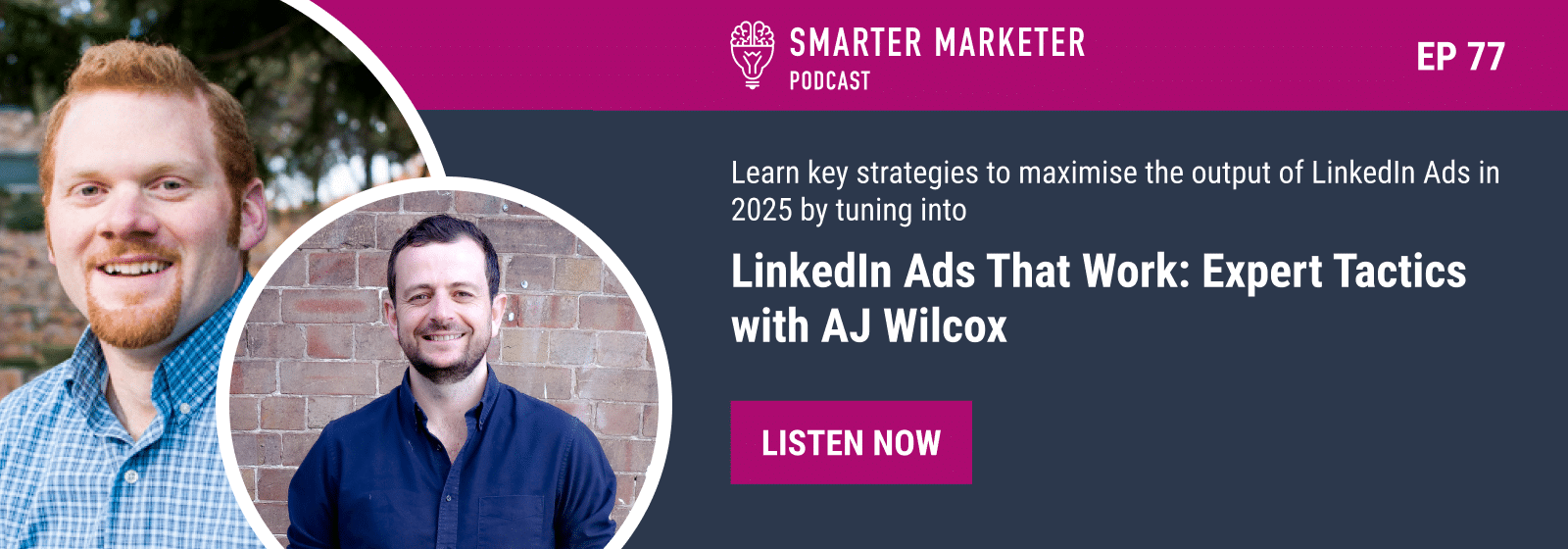
An enhanced shopping experience on Pinterest
Exciting new updates will change the game for eCommerce businesses in 2025 and if you market one, Pinterest’s innovative new advertising solutions are where you should start.
Premiere Spotlight Ads
Premiere Spotlight is a premium ad placement that lets brands secure prominent positions on Pinterest's platform for a designated period, typically 24 hours. These placements are available on high-traffic areas such as the search page and home feed, occupying approximately 50% of a mobile device's screen - ideal for product launches or seasonal promotions that rely on maximum visibility for success.
Idea Pins Ads
Idea Pins Ads let you create engaging, shoppable content that combines storytelling with direct purchasing options. These multi-page formats are great for showcasing products or ideas creatively, encouraging users to interact and explore. By integrating direct links, users can seamlessly transition from inspiration to purchase, resulting in a seamless shopping experience and more conversions.
AR try-on updates
Pinterest has also enhanced its augmented reality (AR) capabilities, particularly for fashion and beauty products, allowing users to virtually "try on" items before making a purchase - a cool (and powerful) new feature. It helps increase user confidence in product selection and can naturally lead to higher conversion rates. Who doesn’t like to ‘experience’ the purchase before making the purchase? It makes a world of difference to a buyer’s confidence in the product.
Snapchat’s strategic shifts in ads and AR
Several new advertising innovations are opening doors for marketers to enhance engagement and streamline campaign management in 2025:
Spotlight Ads
Snapchat's Spotlight feature, similar to TikTok's short-form video content, now supports advertising. You can place ads within Spotlight and reach users engaging with trending content. This integration allows brands to tap into Snapchat's dynamic user base, particularly the younger demographic, by delivering engaging, relevant ads in a format that resonates with popular forms of content consumption nowadays.
AR Enterprise Services (ARES)
ARES provides businesses with advanced augmented reality tools to create interactive product experiences. These services can help you develop AR try-on features, immersive storytelling and interactive advertisements as you please, thus offering greater creative control of your ads. Its a brilliant way to bridge the gap between physical and digital shopping and create engaging experiences.
Dynamic Ads for eCommerce
Dynamic Ads streamline the integration of product catalogues and automatically create personalised ads based on user behavior and preferences. These ads offer real-time updates about product availability, pricing and promotions, ensuring that users receive the most relevant and up-to-date information. Dynamic Ads are a great way to efficiently scale your advertising efforts and deliver personalised shopping experiences to a broad audience.
TASK:
- If you’re keen to trial TikTok for your business, don’t use the same content as other platforms expecting good results. Research trending topics and audio on the platform, and match it with your branding and messaging. Ensure that the tone of voice and messaging is central to your brand.
- Curious about how you can drive brand awareness with audio advertising? Test Spotify ads for a minimum spend of $250, and reach audiences in an engaging media environment.
3. SEO - Shifts You Should Know About
SEO is evolving as AI reshapes search behaviour and Google refines how it ranks content. With AI Overviews answering more queries directly in search results, fewer users are clicking through to websites. At the same time, Google is prioritising well-structured, in-depth content from trusted sources. The sites that stay visible will be those that demonstrate real expertise and provide genuine value. Staying ahead means focusing on accuracy, originality and structure - creating content that’s useful, well-organised and written for people, not just algorithms.
AI Overviews in search results
After a bumpy roll out in 2023, AI overviews were removed by Google, and relaunched in 2024. Overviews are a feature driven by generative AI technology that gives users quick, AI-generated summaries at the top of the search engine results page (SERP). This marks a major development in the search experience as these AI-powered summaries aim to deliver the most relevant and concise answers directly within the SERP.
Now, instead of clicking through to your website, users can now get answers directly on the search results page. That means fewer visits, lower click-through rates (CTR) and a new challenge for marketers like you.
If your content relies on organic traffic—especially for informational or “how-to” searches—you’ll likely see a decline. AI Overviews are designed to satisfy user queries instantly, reducing the need to explore further. This means your strategy needs to evolve.
To stay visible, you need to fight for inclusion in AI Overviews. Google prioritises authoritative, well-optimised content, and to be featured, your content must be:
- High quality – Comprehensive, accurate and genuinely useful to the reader.
- Well-structured – Clear headings, bullet points and schema markup help search engines understand and surface your content.
- Topically authoritative – Sites that demonstrate expertise through deep, structured content clusters are more likely to be selected.
Your keyword and content strategy also need a rethink. AI Overviews handle broad, simple queries, so your opportunity lies in what AI doesn’t do well—deeper analysis, unique insights and original perspectives. Case studies, expert opinions and original research will still attract clicks because they offer value beyond a quick answer.
Even if users don’t click through, AI Overviews can still work in your favour. Being featured builds trust and brand awareness. To maximise this, focus on delivering clear, authoritative answers to key industry questions. Optimising featured snippets and FAQ schema will also increase your chances of being included in AI summaries.
Search is evolving fast, and so should you. The brands that adapt—by focusing on authority, structure and strategic content—will be the ones that stay ahead.
AI generated content is flooding search engines
Using AI tools like ChatGPT, Gemini and other content generation platforms is now a daily for marketers. These tools enable producing large volumes of content quickly and cost-effectively. While this efficiency is appealing, it has also led to a flood of mediocre, AI-generated content across websites, blogs and social media platforms. As quality, originality and the inherent value in a content piece (any piece - a webpage, a blog, a landing page or something else) diminishes, you’re bound to struggle with long-term SEO success - especially as Google continue to value E-E-A-T (Experience, Expertise, Authoritativeness and Trustworthiness).
To adapt, you need to bring fresh thoughts and content to the table - and consistently. Write blogs with original insights, such as proprietary data, expert opinions and case studies that cannot be replicated by AI. You can also leverage human interviews, thought leadership pieces and personal experiences to showcase human expertise.
In essence - share stand-out information for stand-out visibility.
Secondly, user need should be the focus of any content that you are sharing online. At the end of the day, answering your target audience’s most pressing problems is going to increase your website traffic, user engagement, and ultimately, higher-quality leads.
Topical authority is becoming increasingly important
The concept of topical authority has emerged as a critical focus for SEO strategies, as search engines like Google increasingly reward websites that demonstrate deep expertise and comprehensive coverage of specific subject areas. Rather than simply targeting isolated keywords, search engines now award visibility to websites that provide authoritative, interconnected content across a given topic.
To adapt you must move away from one-off content creation and instead focus on developing content clusters - interlinked pages that provide comprehensive coverage of a subject. This means identifying core topics, addressing user intent across all stages of the customer journey and consistently updating content to remain relevant. An additional perk is that while building authority, you will also gain audience trust, increase dwell time and capture organic traffic across a range of search queries.
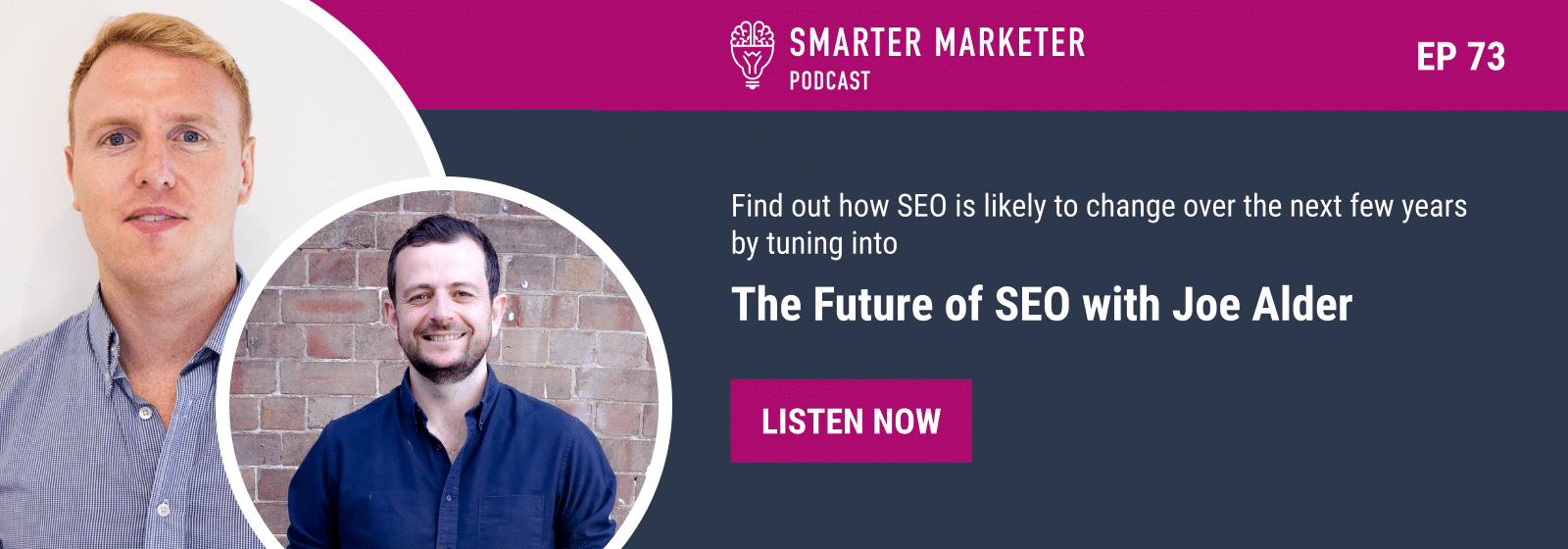
TASK:
Take a few moments to evaluate your current content strategy by answering these questions:
- AI overviews:
- Are your pages structured to appear in AI summaries, such as using schema markup, clear headings, and bullet points?
- Topical authority:
- Does your website have interlinked content clusters around core topics?
- Are you demonstrating expertise with original content like case studies and thought leadership?
- Balancing AI and human creativity:
- How are you using AI tools in your content creation process?
- What steps are you taking to ensure originality and maintain your brand voice?
- AI overviews:
4. The Changing Video Landscape
Video is redefining digital engagement in 2025, with short-form, interactive and shoppable content leading the way. As attention spans shrink, audiences expect immersive, authentic experiences, not passive storytelling. Brands that adapt to this shift are forging deeper connections and driving tangible impact. To stay ahead, you need to embrace video strategies that foster participation, build community and seamlessly integrate commerce, meeting audiences where they already are.
Dominance of short-form videos
Platforms like TikTok and Instagram leverage advanced algorithms that prioritise engaging short-form content. This helps brands connect with audiences outside their follower base, ensuring higher visibility and discoverability. These emerging features will impact how you approach video content creation in 2025:
- Enhanced shopping features: Interactive links and product tagging within short videos make it easier for viewers to shop directly.
- Better editing tools: Platforms continue to innovate by providing user-friendly tools for video editing, transitions and effects, enabling creators to deliver professional-quality content quickly.
- Analytics: Insights into how viewers engage with specific parts of a video help refine future campaigns.
As of recent (and in the future) capturing attention in seconds requires concise, engaging content tailored to platform trends, with a focus on personalisation through advanced analytics. If you’re an eCommerce or B2C marketer allocating more budget towards video production might be worth your while (as always, whether or not this strategy is the right move for your business will depend on your business’ resources and needs - for an opinion, get in touch with our experts).
Ultimately, staying culturally relevant and strategically agile will be key to thriving in today’s fast-paced, visually driven digital world.
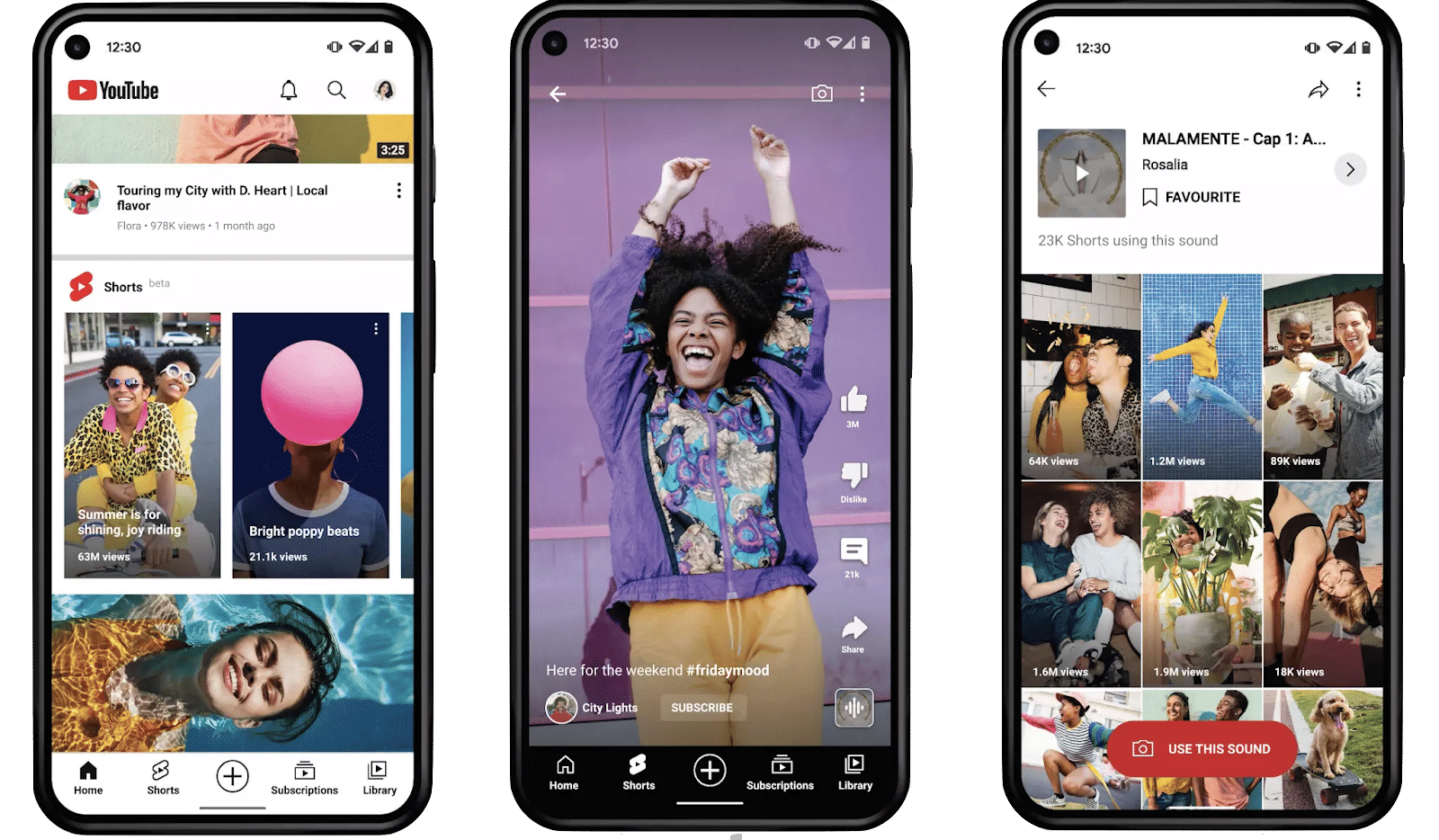
User-generated content
User-Generated Content (UGC) remained one of the most influential and cost-effective strategies for brands in 2024 and its role is expected to grow even further in 2025. UGC refers to content - such as images, videos, reviews and testimonials - created by real customers or influencers, showcasing their genuine experiences with a brand’s products or services. It’s particularly valuable because it offers an authentic, relatable perspective that resonates deeply with audiences who are increasingly wary of traditional advertising.
UGC works because it’s authentic, builds trust, and drives engagement. People trust real content from other users more than polished ads, making brands feel more human. It also leverages social proof—when potential customers see others using and endorsing a product, they’re more likely to buy. Plus, UGC encourages participation, creating a stronger sense of community and loyalty.
In the recent future, you will most likely need to prioritise authenticity, community building and personalised engagement to build and maintain a reputable brand with high customer loyalty. Partnering with micro-influencers will increasingly become the norm and encourage a flurry of relatable, diverse content that resonates with audiences. The key to success is building strong, meaningful relationships - not just with your current and prospective customers, but with your brand or product’s community at large.
Interactive and shoppable videos
Interactive and shoppable videos have revolutionised the way brands engage with consumers, blending entertainment, participation and convenience. By offering personalised and dynamic experiences, these videos not only captivate viewers but also drive measurable results, making them a key trend in digital marketing. Features such as clickable hotspots, branching scenarios and embedded quizzes keep users involved, ensuring they spend more time with the content.
Shoppable videos: A game-changer for eCommerce
Shoppable videos are changing the game—blending content and commerce into one seamless experience. By letting consumers buy directly within the video, they shorten the path from discovery to checkout, driving higher conversions and reducing friction.
Why it works? Less hassle, more action. Consumers can click and purchase instantly, eliminating extra steps. The visual and emotional pull of video also fuels impulse buys, especially when paired with exclusive deals. On top of that, brands gain valuable insights—tracking clicks, interactions, and purchase patterns to refine their strategy.
The key moving forward? Make the experience seamless, engaging, and memorable. Even if users don’t buy right away, a great interaction keeps your brand top of mind. But with rising production costs, balancing innovation with efficiency is crucial. Transparency in data usage will also be non-negotiable for building trust.
4. Key Email Marketing Updates
Email marketing is being redefined by AI-driven personalisation, interactive content and stricter data privacy rules. Brands are moving beyond generic campaigns, using smart automation to deliver hyper-relevant, engaging experiences. With third-party data fading and mobile dominating, the future belongs to those who balance innovation with trust and transparency.
AI is driving hyper-personalised emails
The integration of AI into email marketing is changing how businesses connect with their audiences, pushing personalisation to new heights. Traditionally, email personalisation relied on simple elements like inserting a recipient's name or referencing a recent purchase. Now marketers are moving beyond basic tactics, delivering hyper-personalised experiences that are dynamically tailored to individual user preferences, behaviours and lifecycle stages.
Audience segmentation is now smarter. AI analyses real-time behaviour to group users more precisely, ensuring your emails reach the right people at the right time. It also powers hyper-relevant triggers—customising cart abandonment emails with tailored incentives or re-engaging dormant subscribers with content that matches their interests.
However, while AI enhances personalisation, balancing it with privacy is key. As regulations evolve, brands must prioritise transparency and trust.
Use interactive content in your emails
Interactive email content has emerged as a game-changer in email marketing, transforming static messages into engaging experiences that drive higher interaction rates and provide added value to subscribers. By using elements like polls, quizzes, surveys and embedded videos, marketers can create two-way communication that encourages recipients to actively engage with the content rather than passively consume it. Different types of interactive elements you can include are:
- Polls and surveys
- Quizzes and calculators
- Embedded videos and GIFs
- Accordion and dropdown menus
- Gamification elements
Important note: While interactive elements like polls, quizzes and embedded videos boost engagement and provide valuable behavioural data, it is absolutely crucial to ensure seamless functionality across devices and email clients. If your gorgeous, creative, engaging email isn’t accessible to your audience because your email client doesn’t support embedded forms, then there’s little merit in pursuing a novel approach to your email marketing. Sticking to the basics will probably do you more good and is still one of the most effective ways to gather and engage your MQLs.
Pay attention to data privacy and compliance
Maintaining customer trust is no longer optional, it’s a cornerstone for long-term success and loyalty. High-profile data breaches, privacy scandals and a growing demand for ethical data usage have compelled brands to adopt transparent, secure and compliant data practices. Some drivers behind this that you should be aware of are:
- Evolving global regulations: Laws like GDPR (Europe), CCPA/CPRA (California), and updates to Australia’s Privacy Act mandate strict requirements for data collection, storage and usage. If your brand navigates globally, you must navigate this patchwork of regulations to avoid legal penalties and maintain consumer confidence.
- Growing consumer awareness and expectations: Consumers are increasingly aware of how their personal data is used and are demanding greater control and transparency. Opt-in consent, clear unsubscribe options and straightforward privacy policies are now baseline expectations. Brands that demonstrate ethical data practices are more likely to earn trust, while those perceived as careless risk losing customers and damaging their reputation.
- Third-party cookie deprecation: The ongoing phase-out of third-party cookies has amplified the need for first-party data strategies. It’s high time to focus on building permission-based email lists through value-driven content and transparent data collection practices. Zero-party data - information willingly shared by customers, such as preferences or survey responses - will become invaluable for personalisation without infringing on privacy.
Optimise through mobile-first design
With mobile devices now accounting for over 60% of email opens globally, mobile-first design has become a non-negotiable element of successful email marketing. As consumers increasingly rely on smartphones and tablets to check their inboxes, brands must ensure that emails are visually appealing, accessible and functional across all screen sizes. Emails that fail to deliver a seamless mobile experience risk being ignored, deleted or even marked as spam, leading to lower engagement rates and missed opportunities.
With clear, scannable content and mobile-centric features like location-based offers and deep links, brands can drive engagement and conversions by delivering frictionless, action-driven email experiences tailored to the modern, on-the-go audience.
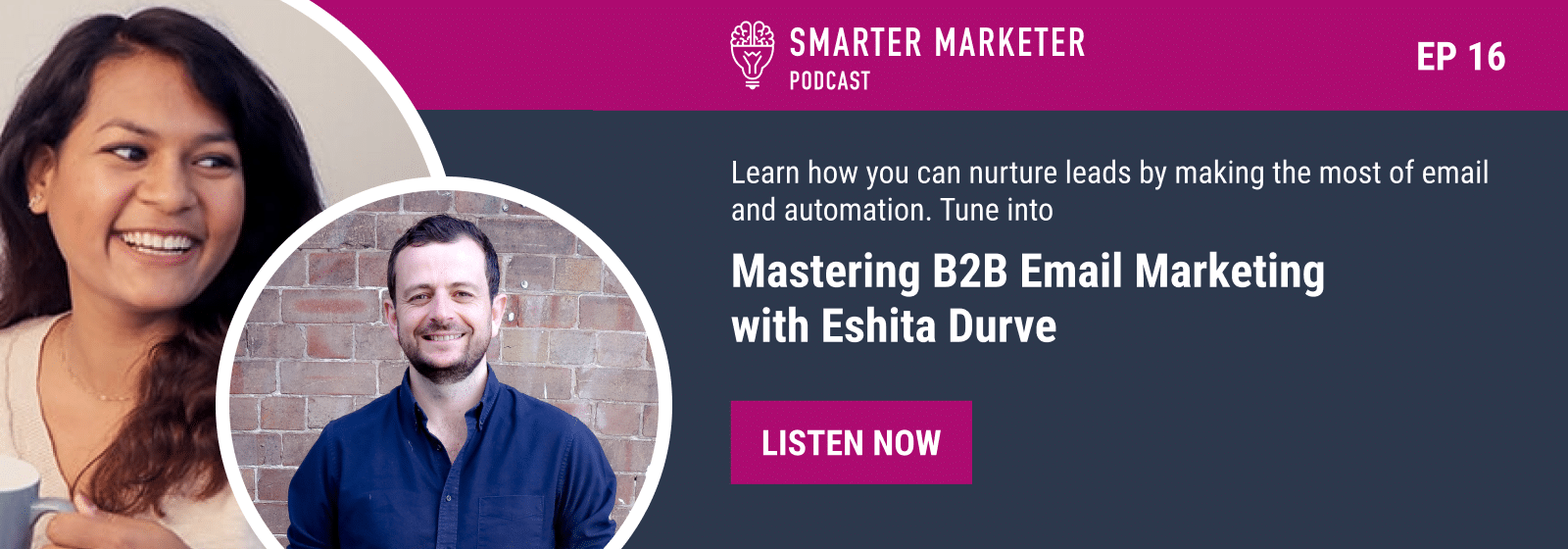
TASK:
Review your email stats to check ‘Opens by Email Client’ which breaks down your ‘opens’ by Gmail, Chrome, Office, Yahoo Mail and the like. Accept that the opens from Apple Mail will be unreliable. Work with metrics other than open rate such as click rate, reply rate and unsubscribe rate. Adjust your automated email scripts so they make sense even if someone has not opened prior emails.
5. The Latest in AI
The rise of generative AI is fundamentally altering the way advertising operates, opening up unprecedented possibilities for innovation and efficiency. As traditional methods of content creation become increasingly obsolete, AI is enabling brands to craft deeply personalised experiences at a pace and scale never before possible. With its ability to analyse vast amounts of data and generate tailored content, AI is not just transforming creative production – it’s revolutionising how we engage with audiences. Here’s how this technology is reshaping the future of advertising and why marketers must leverage its potential to stay competitive.
AI tools to watch out for
Try Adobe’s GenStudio for performance marketing
Adobe has taken a leading role with its GenStudio for Performance Marketing, an end-to-end platform leveraging generative AI to empower marketers. It focuses on three core areas: content planning, creation and measurement, making campaign execution faster and more data-driven. Here are some ways to use it:
- A/B test creatives - You can instantly generate multiple ad variations for testing.
- Social ad automation - Resize, reformat and tweak creatives for different platforms in seconds.
- Programmatic ad scaling - Auto-generate and tag hundreds of ad variations for programmatic campaigns.
HubSpot Content Assistant and Chatspot.ai
HubSpot’s AI-powered tools make CMS management easier and faster by automating content generation, improve lead nurturing and personalise customer experiences.
- Content assistant: Uses generative AI to draft blog posts, emails, social media content and ad copy that align with a brand’s tone and goals.
- ChatSpot.ai: An AI chatbot that automates CRM workflows, allowing marketers to pull reports, send follow-ups and manage campaigns more efficiently.
Google’s Performance Max
PMax campaigns use machine learning and AI to automate ad placements, optimise performance and maximise conversions across Google’s network. The tool dynamically generates ad creatives and allocates budgets to the best-performing assets, ensuring marketers achieve optimal ROI with minimal manual intervention.
With the rise of generative AI in ad creation, brands need to balance automation with creative control to ensure campaigns stay on-brand and don’t end up being generic.
Canva Magic Studio
Canva integrates generative AI through tools like Magic Design and Magic Write to simplify content creation for marketers and designers.
- Magic Write: Automates text generation for social media, blogs and email marketing campaigns.
- Magic Design: Instantly creates branded templates, presentations and visuals tailored to specific audiences.
Hootsuite Owly Writer AI
Social media management platforms like Hootsuite are incorporating generative AI tools to automate content ideation, caption writing and performance tracking. Owly Writer AI enables marketers to:
- Generate engaging social media captions and hashtags based on input prompts.
- Schedule content at optimal times using AI-driven insights.
Ahrefs and Semrush
Ahrefs and Semrush use AI to uncover high-value keywords, highlight competitor gaps, and identify backlink opportunities that improve search performance. They also streamline SEO audits, detecting technical issues that could impact rankings, helping you stay ahead with data-driven insights.
Start by conducting keyword research. Enter a seed keyword to discover high-value keywords, search volume, and competition levels. Use competitor analysis tools to identify gaps in their strategy and find backlink opportunities.
For SEO audits, run a full site analysis to detect technical issues like broken links, slow loading speeds, or missing meta tags. Both platforms provide actionable recommendations to fix these issues and improve rankings.
To track progress, monitor keyword rankings, backlinks, and site health over time. Regularly update your strategy based on AI-driven insights to stay competitive in search results.

Time To Make It Happen
As we’ve covered, the buyer’s journey has become more complex and touch points are increasingly unmeasurable across industries. But, as always, is our responsibility as marketers to find the best ways to reach the right audience with the right message at the right time.
While data and attribution challenges will only increase, and AI will continue to improve in performance, we need to balance our short-term and long-term marketing efforts. This is the only way that as marketers, we can ensure that we’re meeting leads and sales targets in the present, and building a foundation for sustainable results in the future.
More than ever, a winning digital marketing strategy will require businesses to dabble in multiple channels and with highly effective messaging and creative. Ironically, you’ll have to invest in marketing activities without a simplistic dollar-in-dollar-out approach to maximise the impact of your marketing budget. Investing in your brand is likely to become the norm, capturing the attention of your prospects much before they are ready to buy. I urge you to consider what you can action in the next quarter or 6-18 month period to set your business up for success over the next three years.
Rocket Agency has helped scores of businesses drive genuine marketing results with our multi-award-winning team. Our experts in SEO, PPC, Paid Social and Creative have proven their skills time and time again with tailored marketing strategies in Australia that directly link to business outcomes.
If there is anything the team at Rocket can do to help, or any question we can answer to give you clarity, don’t hesitate to be in touch at rocketagency.com.au/contact or 1300 059 620.
Good luck!
James Lawrence
About the Author

James is co-founder of multi-award-winning Australian digital marketing agency Rocket, keynote speaker, host of Apple’s #1 Marketing Podcast, Smarter Marketer, and co-author of the 2019 Amazon Australia’s #1 best-selling marketing book of the same name. He was also a finalist in 2019 and 2020 B&T Marketer of the Year.
James’ 15-year marketing career working with more than 500 in-house marketing teams inspired the 2019 release of Smarter Marketer. It has been endorsed by marketers at some of Australia’s leading brands, including Hubspot and KPMG.
In 2022, James launched the Smarter Marketer podcast, the definitive podcast for Australian marketers. Released fortnightly, James sits down with local experts and global authorities to discuss how Australian marketers can become more successful in their careers.












